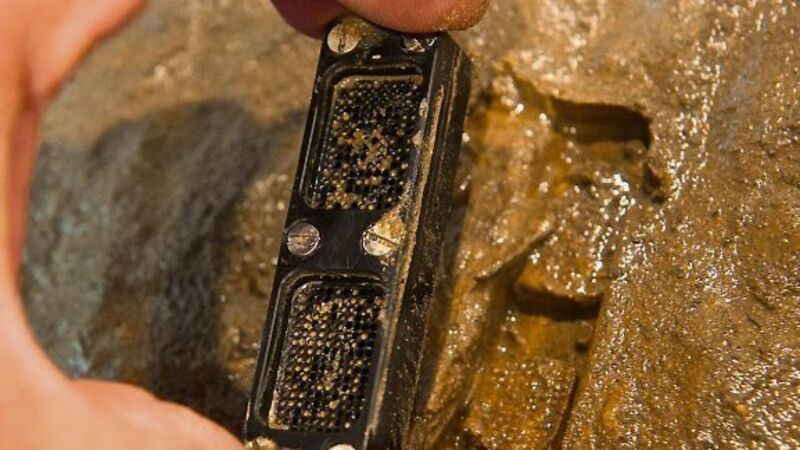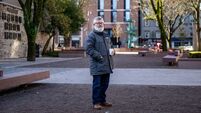New antibiotic is our best hope since penicillin in fighting infection

A&E is where the vulnerable meet the voracious. The vulnerable being the elderly and the sick, whose immunity is compromised. The voracious being the bugs carried by other patients in A&E. Never the twain should meet, but meet they do, and rather more often in A&E than in ordinary hospital wards.
This turns the emergency department into an intensified version of the infection-control problem in every healthcare system in the world.
Healthcare is caught between a rock and a hard place in managing infections. The rock is the lack of new antibiotics. The hard place is the development of antibiotic-resistant bacteria.
The latter is a terrifying reality that is pushing medical progress backward and making even ordinary infections more difficult to eliminate, thereby reviving the old saying that “the operation was successful, but the patient died.” That is what used to happen when highly skilled surgeons did wonderful work, only to have the patient die a few days post-surgery, because of bugs colonising the wound.
Scientist Alexander Fleming changed all that for good, we thought, by being a slob. If Fleming had run a restaurant, it would have been closed by the local authority as a threat to public health, so lax were his procedures.
He went on holidays, leaving the petri dishes in his laboratory unprotected. Spores of mould from outside the building blew in through a window, got into the dishes, and grew.
Where Fleming got lucky was that, as the mould grew, it ate up the bacteria he had been cultivating in the dishes. From that accident came penicillin, the first antibiotic.
That was in 1943. Penicillin radically changed morbidity and mortality rates. For the better. It also radically changed the way doctors and patients looked at infection. Not for the better.
With the magic bullets of penicillin and the variety of infection-specific antibiotics at their disposal, it seemed as if medical professionals had disease on the run, and so the precautions against infection softened, up to and including the length of time surgeons spent scrubbing their hands before operating theatre.
Patients developed a matching, casual assumption that even the worst infection could be, and should be, handled by an antibiotic. Meanwhile, the bugs got on with doing what bugs do, which is morph into bigger and better bugs. They were here long before we humans arrived and they’re going to be here long after we become extinct.
Because, in surviving and evolving, they beat us hands down. Despite the best efforts of the pharma industry and academia, the development in antibiotics from the 1970s onwards failed to match the capacity of bugs to resist them, and names like C. Difficile, and initialisms like MRSA, leached into daily speech.
That’s why the news in the scientific journal, Nature, of the discovery of an antibiotic that is new and different is so significant.
The soil we walk on and live off is host to millions of bacteria, from which antibiotics might be developed.
The problem is growing them in a laboratory. So the scientists decided to grow them in situ. To facilitate that, they made an oblong device that looks like a distant cousin of an early mobile phone.
They called it an iChip, a lousy copycat title for something that may be of much more importance to humanity than any of the other gadgetry that begins with the letter I. The iChip is revolutionary in allowing bacteria to grow in their natural environment.
Having screened about 10,000 different bugs found in soil, the scientists decided that Eleftheria terrae showed exceptional promise, particularly at killing other bacteria and in the way it did it. It broke down the walls of the bad bugs, which screwed with their capacity to get on with their natural workday.
Eleftheria was branded as Teixobactin, although ‘branded’ may be a bit previous, since it will be several years before the revolutionary antibiotic makes it onto the shelves of your local pharmacy, and that’s assuming it doesn’t reveal some nasty habit that might preclude it ever getting into practical use.
So far, though, Teixobactin is looking good. It’s been tested on mice (where would the human race be without mice, even before Disney got going?) and proved to be remarkably effective.
Even better, bacteria that might have been expected to develop resistance to Teixobactin, having been exposed to it, did not develop such resistance.
That’s not to say that, over time, given the incredible adaptability of bacteria, they won’t learn to resist the big T, but, at this early stage, before we ever get to testing Teixobactin on humans, it is looking astonishingly good.
This comes about because of co-operation between Northeastern University, in Boston, and a small pharmaceutical company. Professor Kim Lewis, the lead academic on the study, has predicted that Teixobactin will be in clinical trials within two years.
Positive results would make Teixobactin available before the end of the decade.
That’s not soon enough, according to the World Health Organisation, which describes antibiotic-resistant infections as one of the biggest threats to world health.
That’s not soon enough, according to the Obama administration, which is laying heavy emphasis on the discovery of treatments for resistant infections.
It will take time for Teixobactin to get into hospitals and, even then, it won’t be effective against a swatch of bacteria, including those that cause gonorrhea. Its arrival, nonetheless, should make an enormous, welcome difference to healthcare here and everywhere else.
Older people who should be in nursing homes are often assumed to spend more time in hospital than is theoretically appropriate. They may be the biggest cohort, but, worldwide, hospitals are clogged with patients who develop illnesses caused by bacteria for which we currently do not have an effective antibiotic.
The news needs to be caveated up to the ears, but it is profoundly hopeful, not least because the pharma company involved has already successfully developed 25 antibiotics.
But registering the usual health warnings shouldn’t take from the wonder of the discovery and the direction set by the manner of finding it.
A professor of biochemistry at McMaster University, in Canada, who had nothing to do with the study, stresses precisely that.
“They’ve looked where no-one was looking before,” he says. “In a field full of doom and gloom, they’ve shown us a new way to develop antibiotics.”
Positive results would make Teixobactin available before the end of the decade. It’s not soon enough














